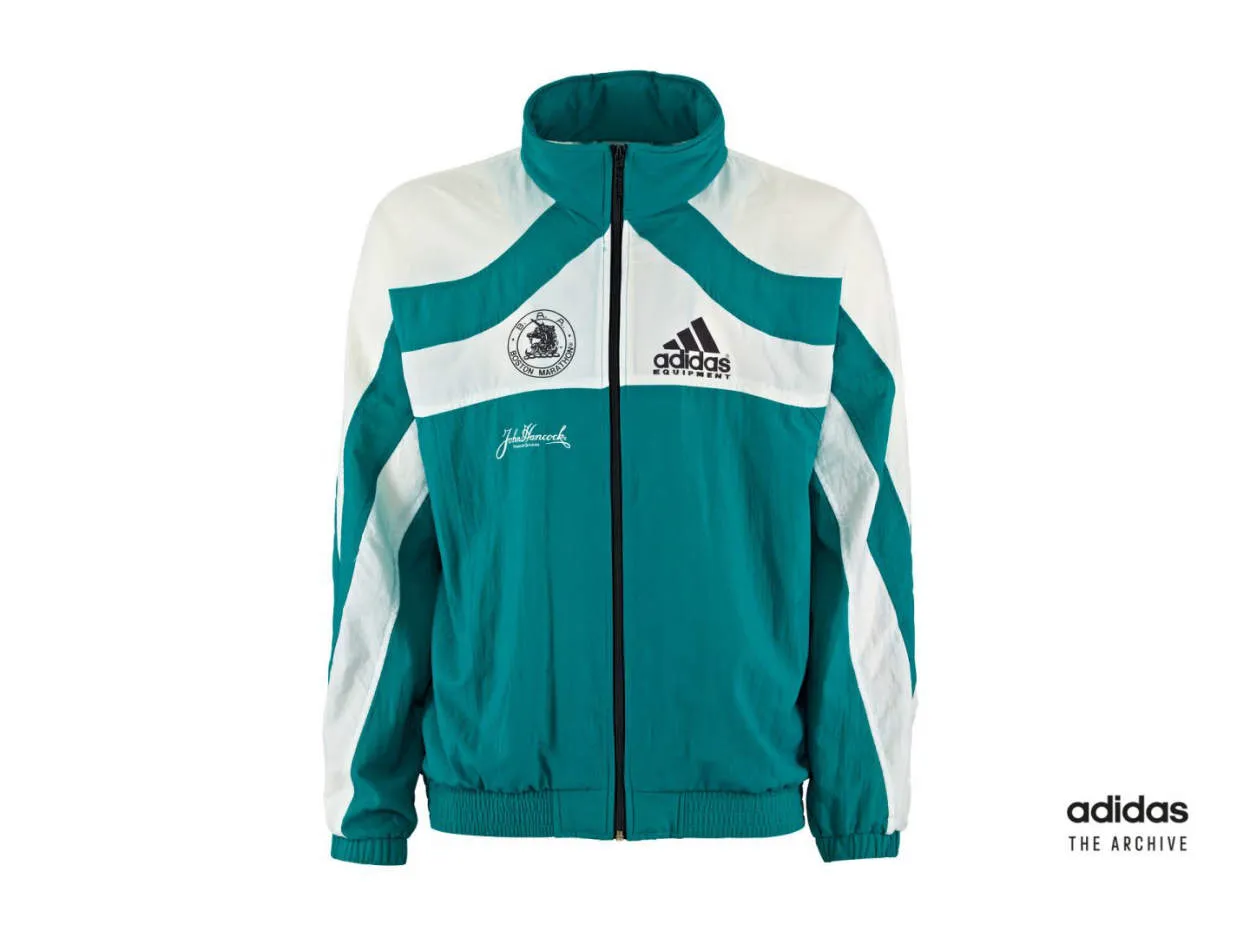Tracksuits in athletics have come a long way, evolving from simple functional attire to a symbol of performance and style. This article delves into the history of tracksuits, exploring their beginnings and their transformation into a fashion statement worn by athletes around the world.
The Evolution of the Tracksuit in Sports
The tracksuit has undergone significant changes throughout its history in the realm of sports, transforming from a basic athletic garment to a symbol of both performance and style.
Early Beginnings
In the early days of athletics, tracksuits consisted of a simple matching top and bottom, typically made from heavy materials like cotton. They were primarily designed for warmth and comfort during training sessions or competitions.
Technological Advancements
As advancements in textile technology emerged, tracksuits started incorporating lightweight, breathable fabrics that improved athletes’ performance. Materials like nylon and polyester became popular, allowing for better moisture-wicking capabilities and enhanced freedom of movement.
A Style Statement
Tracksuits began to transcend their practical purpose and became fashion statements. Athletes started wearing them not only during workouts but also as part of everyday attire. The tracksuit became an iconic symbol of casual sporty style in the late 20th century.
Modern Features
In recent years, tracksuits have further evolved to include features such as tapered cuts, zippered pockets, and innovative fabric technologies. These advancements have helped improve both performance and style, providing athletes with functional yet fashionable options.
Influence on Pop Culture
The tracksuit’s popularity in sports has also extended its influence into pop culture. Numerous celebrities and musicians have embraced tracksuits as a fashion statement, further solidifying its place as a stylish athleisure garment.
Continued Relevance
Today, tracksuits continue to play a vital role in the world of sports and fashion. As sportswear brands continually innovate and collaborate with designers, the tracksuit remains a symbol of both athletic performance and contemporary style.
Iconic Tracksuits in Athletic History
The use of tracksuits in athletics has a long and rich history, with certain designs becoming iconic and synonymous with both performance and style. These tracksuits not only provided athletes with functional benefits but also made a lasting impact on the fashion world. Let’s take a look at some of the most iconic tracksuits in athletic history:
1. adidas Originals Firebird Tracksuit
The Firebird Tracksuit, introduced in the 1970s by adidas, quickly gained popularity and became a symbol of athletic success. Its sleek design, featuring the iconic 3-stripes down the sleeves and legs, made it instantly recognizable.
2. Nike Tech Tracksuit
Nike revolutionized the tracksuit game with the introduction of the Nike Tech Tracksuit. The combination of technical fabrics and modern design provided athletes with enhanced performance while maintaining a stylish appearance.
3. Puma T7 Tracksuit
The Puma T7 Tracksuit, known for its signature side stripe design, has been a favorite among athletes and fashion enthusiasts alike. Its retro-inspired look brings a touch of nostalgia to the track and has influenced the streetwear scene for decades.
4. Umbro Diamond Tracksuit
Umbro’s Diamond Tracksuit has become a classic in the world of football. The diamond pattern on the jacket and pants sets it apart from other tracksuits, and its durability and comfort make it a favorite choice for athletes on the field.
5. FILA Velour Tracksuit
FILA’s velour tracksuit gained significant popularity in the early 2000s, becoming a fashion statement both on and off the track. Its luxurious velour fabric and bold branding made it a stylish choice for athletes and celebrities alike.
These are just a few examples of the iconic tracksuits that have made their mark in athletic history. They not only served as functional sportswear but also influenced the fashion industry, shaping trends for years to come.
The Functionality of Tracksuits in Training
Tracksuits have long been a staple in athletics, offering both practical functionality and a touch of style. These versatile garments play a vital role in training, providing athletes with numerous benefits that enhance their performance and comfort.
One of the key functions of tracksuits is their ability to regulate body temperature during workouts. Made from lightweight and breathable materials, they help athletes stay cool by allowing air to circulate. In colder conditions, tracksuits provide insulation to keep the body warm. This adaptability ensures optimal performance regardless of the weather.
Tracksuits also offer a range of movements without restrictions. The loose fit and elasticized waistbands allow for a full range of motion during various exercises and stretches. Whether it’s sprinting, jumping, or practicing dynamic stretches, athletes can move freely without feeling constricted by their attire.
Another advantage of tracksuits is their moisture-wicking properties. By actively drawing sweat away from the body, they keep athletes dry and comfortable throughout their training sessions. This feature is particularly beneficial during intense workouts, as staying dry helps prevent chafing and irritation.
Furthermore, tracksuits provide athletes with an additional layer of protection. In outdoor training sessions, they shield the body from potential scratches, abrasions, and external elements. This added protection allows athletes to focus solely on their performance without worrying about minor injuries or discomfort.
In terms of style, tracksuits have evolved over the years to become fashionable and trendy. They now come in a variety of designs, colors, and patterns, allowing athletes to express their personal style while training. This blend of functionality and style makes tracksuits a favored choice among athletes of all levels.
In conclusion, tracksuits serve a vital role in athletic training. Their functionality, including temperature regulation, freedom of movement, moisture-wicking capabilities, and added protection, makes them an indispensable part of an athlete’s wardrobe. Moreover, their evolving style adds an element of individuality and fashion to training attire. Whether on the track, field, or gym, tracksuits continue to play a crucial role in optimizing athletic performance.
The Transition of Tracksuits into Fashion
Tracksuits have come a long way from being solely associated with athletics to becoming a prominent fashion trend. Initially designed as functional sportswear, tracksuits have evolved and adapted to the ever-changing demands of the fashion industry.
In the early days, tracksuits were developed to provide athletes with comfortable and practical clothing for training and competing. Made from lightweight and breathable materials, like nylon and polyester, they allowed for freedom of movement and helped regulate body temperature.
As time passed, tracksuits began to gain popularity beyond the sports arena. In the 1970s and 1980s, they became a fashion statement associated with youth culture and the rise of streetwear fashion. Celebrities began wearing tracksuits outside of the gym, fueling their transition into casual everyday attire.
During the 1990s, tracksuits reached new heights of popularity. Luxury brands started incorporating tracksuits into their collections, elevating them to high fashion status. Designers began experimenting with different fabrics, cuts, and embellishments, making tracksuits more versatile and stylish.
The 2000s saw tracksuits being embraced by hip-hop and urban fashion, further solidifying their place in popular culture. Today, tracksuits have become a staple in streetwear fashion, worn by people of all ages and backgrounds.
What sets modern tracksuits apart is the fusion of style and functionality. They can be seen in a wide range of designs, from minimalist and sleek to bold and vibrant. Tracksuits have also become a canvas for brands and designers to showcase their logo or signature patterns.
Furthermore, tracksuits are now often worn as a fashion statement beyond their original purpose. They merge comfort and style, allowing individuals to express their personal fashion tastes while maintaining a relaxed and casual aura.
In conclusion, the transition of tracksuits into the world of fashion has been remarkable. From their origins in athletics to their current status as a prominent fashion trend, tracksuits continue to evolve and adapt to reflect the changing preferences of consumers. The blending of performance and style has ensured the longevity and popularity of tracksuits in the fashion industry.
The Future of Tracksuits in Athletics
Tracksuits have long been a staple in the world of athletics, offering a combination of performance and style. As athletes continuously push the boundaries of what is possible in sports, the future of tracksuits in athletics holds exciting potential.
One of the key trends emerging in tracksuit design is the integration of advanced technologies. With the rise of smart fabrics and wearable technology, tracksuits are becoming more than just comfortable sportswear. They are now equipped with sensors that can monitor an athlete’s vital signs, track their performance metrics, and provide real-time feedback.
Another aspect shaping the future of tracksuits is sustainability. As the world becomes more environmentally conscious, the sports industry is no exception. Brands are exploring eco-friendly materials and manufacturing processes to create tracksuits that are both high-performance and sustainable. From recycled polyester to biodegradable fabrics, athletes can expect tracksuits that are not only good for their performance but also for the planet.
Furthermore, customization is gaining popularity in the tracksuit market. Athletes have diverse needs and preferences, and being able to tailor their tracksuits to their specific requirements is becoming more important. From customizable colors and patterns to personalized fits, tracksuits of the future will allow athletes to express their individuality while enhancing their performance.
Lastly, the future of tracksuits in athletics goes beyond the competitive field. Tracksuits are becoming a fashion statement, transcending their original purpose. Athletes and fans alike are embracing tracksuits as everyday casual wear, blurring the lines between sports and style. This trend opens up new opportunities for collaborations between sports brands and fashion designers, leading to unique and fashionable tracksuit collections.
In conclusion, the future of tracksuits in athletics is bright and promising. With the integration of advanced technologies, a focus on sustainability, increased customization options, and their growing influence in the fashion world, tracksuits are set to revolutionize the athletic apparel industry. Whether on the track, in the gym, or on the streets, tracksuits will continue to be a symbol of both performance and style in the years to come.
Conclusion
In conclusion, tracksuits have played a significant role in the history of athletics, both in terms of performance and style. From their origins as functional garments for warm-ups and training, to their transformation into trendy fashion statements, tracksuits have evolved to meet the needs of athletes and fashion enthusiasts alike. Today, tracksuits continue to be a staple in the world of athletics, combining functionality, comfort, and style.




